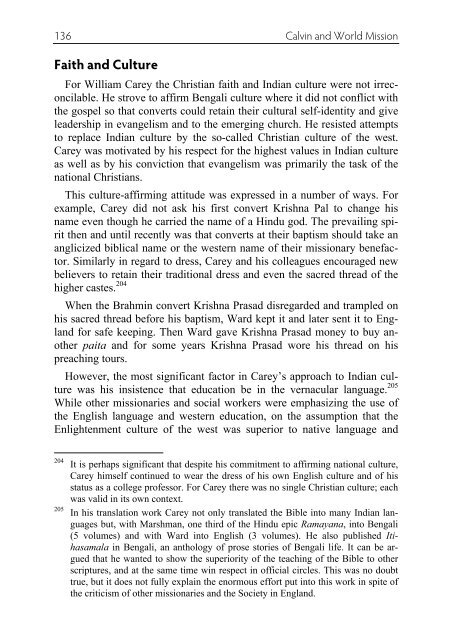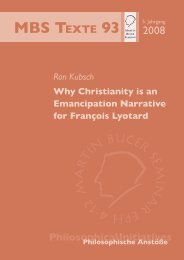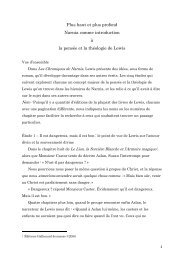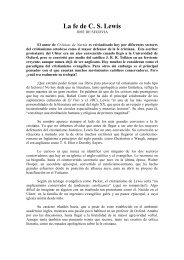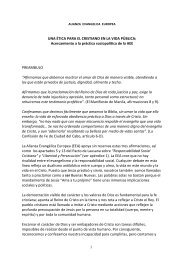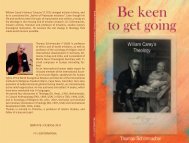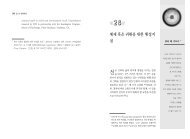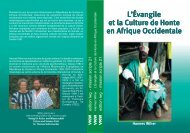Calvin and Missions - World Evangelical Alliance
Calvin and Missions - World Evangelical Alliance
Calvin and Missions - World Evangelical Alliance
Create successful ePaper yourself
Turn your PDF publications into a flip-book with our unique Google optimized e-Paper software.
136 <strong>Calvin</strong> <strong>and</strong> <strong>World</strong> Mission<br />
Faith <strong>and</strong> Culture<br />
For William Carey the Christian faith <strong>and</strong> Indian culture were not irreconcilable.<br />
He strove to affirm Bengali culture where it did not conflict with<br />
the gospel so that converts could retain their cultural self-identity <strong>and</strong> give<br />
leadership in evangelism <strong>and</strong> to the emerging church. He resisted attempts<br />
to replace Indian culture by the so-called Christian culture of the west.<br />
Carey was motivated by his respect for the highest values in Indian culture<br />
as well as by his conviction that evangelism was primarily the task of the<br />
national Christians.<br />
This culture-affirming attitude was expressed in a number of ways. For<br />
example, Carey did not ask his first convert Krishna Pal to change his<br />
name even though he carried the name of a Hindu god. The prevailing spirit<br />
then <strong>and</strong> until recently was that converts at their baptism should take an<br />
anglicized biblical name or the western name of their missionary benefactor.<br />
Similarly in regard to dress, Carey <strong>and</strong> his colleagues encouraged new<br />
believers to retain their traditional dress <strong>and</strong> even the sacred thread of the<br />
higher castes. 204<br />
When the Brahmin convert Krishna Prasad disregarded <strong>and</strong> trampled on<br />
his sacred thread before his baptism, Ward kept it <strong>and</strong> later sent it to Engl<strong>and</strong><br />
for safe keeping. Then Ward gave Krishna Prasad money to buy another<br />
paita <strong>and</strong> for some years Krishna Prasad wore his thread on his<br />
preaching tours.<br />
However, the most significant factor in Carey’s approach to Indian culture<br />
was his insistence that education be in the vernacular language. 205<br />
While other missionaries <strong>and</strong> social workers were emphasizing the use of<br />
the English language <strong>and</strong> western education, on the assumption that the<br />
Enlightenment culture of the west was superior to native language <strong>and</strong><br />
204 It is perhaps significant that despite his commitment to affirming national culture,<br />
Carey himself continued to wear the dress of his own English culture <strong>and</strong> of his<br />
status as a college professor. For Carey there was no single Christian culture; each<br />
was valid in its own context.<br />
205 In his translation work Carey not only translated the Bible into many Indian languages<br />
but, with Marshman, one third of the Hindu epic Ramayana, into Bengali<br />
(5 volumes) <strong>and</strong> with Ward into English (3 volumes). He also published Itihasamala<br />
in Bengali, an anthology of prose stories of Bengali life. It can be argued<br />
that he wanted to show the superiority of the teaching of the Bible to other<br />
scriptures, <strong>and</strong> at the same time win respect in official circles. This was no doubt<br />
true, but it does not fully explain the enormous effort put into this work in spite of<br />
the criticism of other missionaries <strong>and</strong> the Society in Engl<strong>and</strong>.


